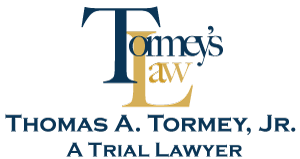Criminal Mischief Crimes in New York
What is criminal mischief?
The crime of Criminal Mischief encompasses a range of offenses, such as vandalism, property damage, tampering with public utilities, and graffiti. It usually involves intentionally damaging or destroying someone else's property without consent, but it can be charged if a person recklessly damages property. New York takes these offenses seriously, and perpetrators can face significant legal consequences.
Criminal mischief can be classified into different degrees depending on the severity of the offense. In New York, these degrees include fourth degree, third degree, second degree, and first degree. The degree is determined based on the value of the property damaged, the type of property, and the intent of the perpetrator.
Types of criminal mischief in New York
There are various types of criminal mischief offenses that are recognized in New York. One common form is vandalism, which involves defacing or damaging property, such as buildings, vehicles, or public spaces. Another type is tampering with public utilities, which includes interfering with electrical systems, water supplies, or transportation infrastructure.
Graffiti is also a prevalent form of criminal mischief. In New York, graffiti refers to the act of marking or painting on public or private property without permission. While some may view graffiti as a form of art, it is still considered a criminal offense when done without consent.
Penalties for criminal mischief in New York
The penalties for criminal mischief in New York vary depending on the degree of the offense and the value of the property damaged. Generally, the higher the degree of criminal mischief, the more severe the penalties.
For fourth degree criminal mischief, which involves property damage valued at less than $250, the offense is considered a class A misdemeanor. It can result in fines of up to $1,000 and a jail sentence of up to one year. However, if the damage is caused to a historical property, the offense can be elevated to a felony.
Third degree criminal mischief, which involves property damage valued between $250 and $1,500, is a Class E Felony. The penalties for this offense can include fines of up to $5,000 and a jail sentence of up to one year.
Second degree criminal mischief, which involves property damage valued between $1,500 and $3,000, is considered a class D felony. Perpetrators can face fines of up to $5,000 and a prison sentence of up to seven years.
First degree criminal mischief, which involves property damage valued at more than $3,000, is considered a class B felony. The penalties for this offense can include fines of up to $15,000 and a prison sentence of up to 25 years.
Defenses against criminal mischief charges
If you are facing criminal mischief charges in New York, there are several defenses that can be used to mitigate the consequences. One common defense is lack of intent, where it can be argued that the damage to the property was accidental or unintentional.
Another defense is the consent of the property owner. If you can prove that you had permission to damage or destroy the property, it can help in reducing or dismissing the charges. Additionally, if the property was abandoned or already damaged, it can be argued that no crime was committed.
Examples of criminal mischief cases in New York
There have been numerous high-profile criminal mischief cases in New York over the years. One notable case involved the infamous graffiti artist, Banksy, who created unauthorized street art across the city. While some viewed his work as artistic expression, others considered it vandalism, leading to a debate about the line between art and criminal mischief.
Another case involved the destruction of public property during protests. In instances where protests turn violent, individuals may engage in acts of criminal mischief, damaging public infrastructure or private property. These cases often result in arrests and prosecutions.
Legal resources for criminal mischief charges
If you are facing criminal mischief charges in New York, it is essential to seek legal guidance to navigate the legal system. Hiring a criminal defense attorney like Tom Tormey, who has handled many people charged with property crimes can provide you with the expertise needed to build a strong defense strategy.
Hiring a criminal defense attorney for criminal mischief cases
When hiring a criminal defense attorney for criminal mischief cases, it is important to consider their experience and track record in handling similar cases. Look for someone like Tom Tormey, who has a deep understanding of New York's criminal mischief laws and has successfully defended clients in the past
During the consultation with potential attorneys, ask about their approach to the case, their fees, and their availability to handle your defense. It is crucial to find an attorney who is not only knowledgeable but also someone you feel comfortable working with.
Conclusion
Understanding criminal mischief in New York is vital for both victims seeking justice and individuals facing criminal mischief charges. From the various types of offenses to the potential penalties and defenses, navigating the complex legal landscape requires expert guidance.
By familiarizing yourself with the laws governing criminal mischief and taking preventive measures, you can protect your property and contribute to the safety and well-being of your community. And if you find yourself in legal trouble, don't hesitate to call Tom Tormey who can help guide you through the process and fight for your rights.
